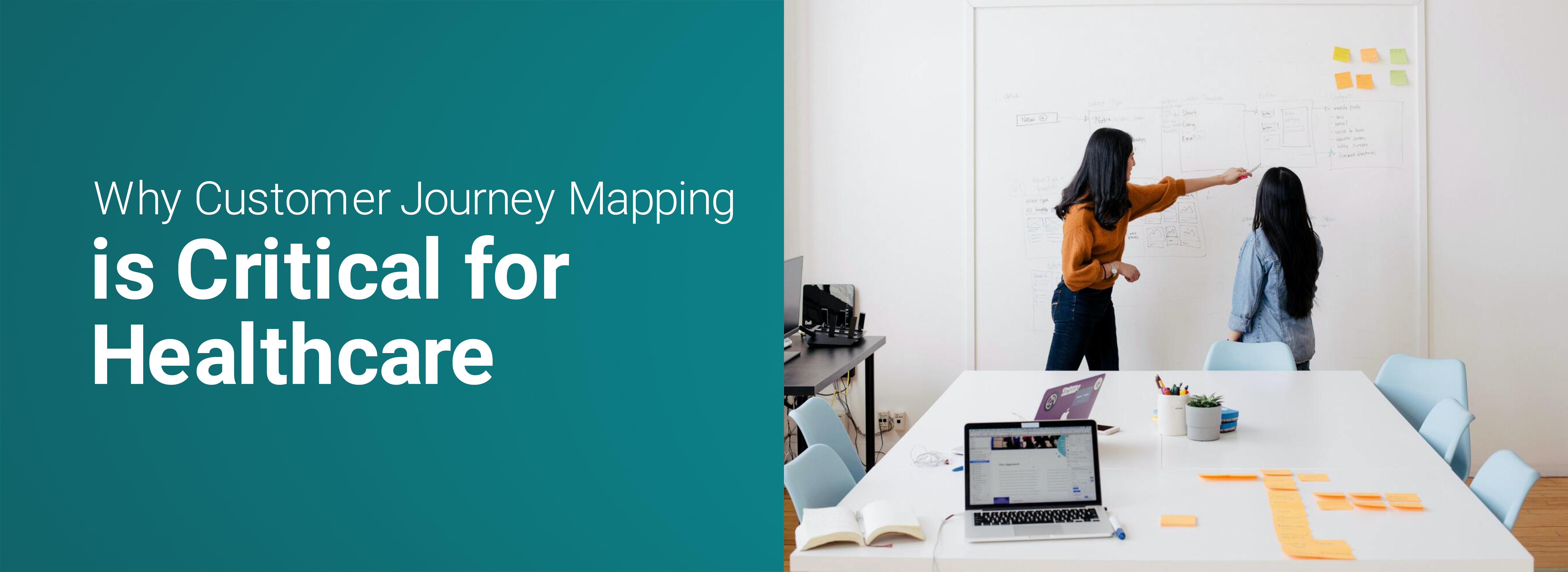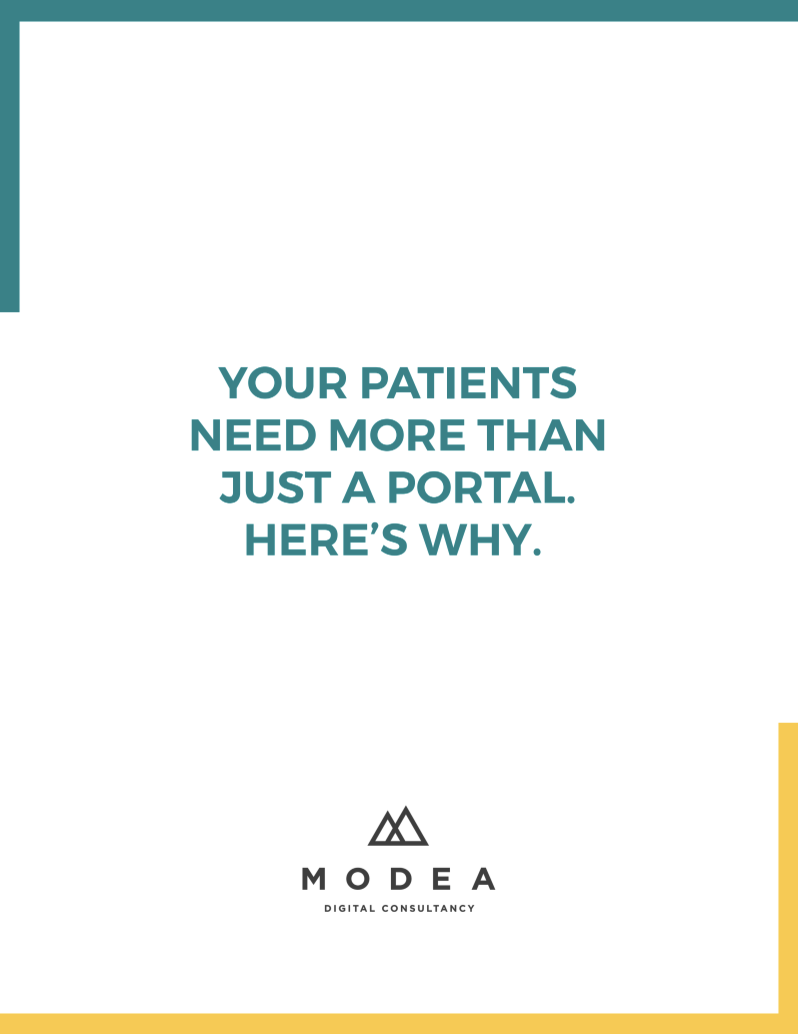
Imagine that you have the power to authorize and create anything you want for your organization’s digital front door. Nothing will stand in your way. Enthusiastically you put your plan into action. And, just like that, you have a newly designed website accompanied by a nice mobile app. All that’s left to do now is sit back and watch consumers and patients engage with all of the new content and features you thought they wanted.
Except they don’t.
Engagement does not increase and traffic even shows a slight decline. Time on page goes down and the number of appointments booked stays where it was prior to all of your work.
You’re stumped because the site matches exactly what you felt was needed. To make matters worse, now you have to explain to your stakeholders and the entire organization what went wrong and why that investment is not paying off.
You can see where this is going.
The issue started because your initial direction came from inside the organization, not from the end-user. Your team didn’t base designs and functionality on real research and data. Instead, you made assumptions about what your customers want and need.
In short, you didn’t create a proper customer journey map. A proper journey map would have provided insights to guide pragmatic decision-making and put your team in a better place.
So, where do you start with healthcare customer journey mapping, and what exactly is it?
A customer journey map is a very in-depth and detailed process that will show you and your organization how consumers’ are interacting with your brand. It will also identify gaps and opportunities you probably are not aware of. The end result is a visual and holistic view of what your organization needs to know. This includes topics your team should think about, from all angles and recommendations on how to implement them.
Journey maps are also a great tool for getting stakeholders and every decision-maker on board to understand what really drives consumers to become your patients. It should also serve as the foundation that will guide every major digital initiative moving forward.
Why do you need a proper customer journey map?
Healthcare is being challenged in all the right ways, and while it may seem like many are now trying to disrupt the industry, it’s actually been a long time coming. Organizations like CitiBank, Marriott, and American Airlines, were traditional companies that saw a need to adapt to the changing digital consumer landscape and they capitalized. You can pay your bill online, book a hotel in a few swipes, book a flight with the click of your finger, and buy a car completely online. We can guarantee that each of these companies had a detailed customer journey map created before they made any changes.
The new way of interacting with top brands has quickly set expectations for the digital experience consumers expect to find with any organization. Healthcare is no different and your consumers and patients want the same experience they get everywhere else.
How do you create the right customer journey map?
It is critical that your journey map is created by the right team to ensure ROI and meaningful next steps. Customer journey maps come in all shapes and sizes and therefore, you should partner with an organization that thoroughly understands the ins and outs of healthcare.
Our UX team members at Modea are not only experts with research and journey mapping development, but also can help your team strategically implement our findings. As well as, use the results to help drive the growth of your consumer base.
We are 100% focused on healthcare and have implemented results for numerous clients like Carilion Clinic, Keck Medicine of USC, and more.
Now, let’s dive a bit deeper into Modea’s customer journey mapping process.
Our approach and important tips.
Competitive Landscape
1.) We begin the process by examining the competitive landscape. This should include physical location visits to your competitors’ hospitals (COVID permitting), combined with an evaluation of their digital presence. Overall, we look at healthcare organizations in your region and nationally to identify potential opportunities and any threats your competitors might pose to patient acquisition.
Complete a Heuristic Review
2.) Next, we schedule in-person site visits to your location(s). We’d walk through as a customer would and look at your existing digital properties to complete a heuristic review. Both of these deliverables help us align on the current state, as well as identify challenges and strengths you have.
Stakeholder Interviews
3.) Thirdly, we carry out stakeholder interviews. This is where we complete a series of one-on-one or group interviews with stakeholders, the champions of your patients’ experience. We will also interview stakeholders at the strategic level, to ensure we’re considering organizational as well as consumer goals. This stage is the most “eye-opening” phase. You and your team will be shocked to see how your various departments differ in opinion, necessity, and overall goals.
Personas
4.) We then create user archetypes known as personas to help frame discussions and guide recruitment for customer research. These patient personas will align with the demographics in your market and include information related to their motivations, needs, and barriers within the healthcare industry.
Hypothetical Maps
5.) The above items could take several weeks, or longer. It all depends on a variety of factors, especially how long lead times are to get interviews and meetings scheduled. But once completed, we start creating hypothetical maps that lay the groundwork for a larger journey map to come. In order to create these maps, we will facilitate in-person sessions with internal stakeholders. During, the goal is to build out the different user journey scenarios that would have surfaced in steps 1-3 above. Again, uncovering additional pain points for the customer as well as helping guide our planning process for customer research.
Customer Research
6.) Next, customer research begins; a combination of web-based surveys and one-on-one or group interviews with customers from your key demographics. At this point, we will be testing any hypotheses we’ve made so far and digging deeper into any key consumer actions and behaviors.
Customer Journey Map
7.) The last and final task is to complete the customer journey map! This will be created by facilitating mapping sessions with actual customers. You can expect to have a variety of audiences produced as a final artifact similar to the below.
Artifacts and presentation
8.) The finished product goes well beyond any documentation or presentation we would provide along the way. When all is said and done, you will be equipped with core audience research, a prioritized list of immediate opportunities and improvements, as well as areas for further exploration. These artifacts will ultimately help support an audience-centric, research-driven approach to the customer experience.
You can see that a proper customer journey is complex. It’s so much more than just writing down what a prospective customer may do or what they are looking for. When we talk about how it’s the foundation for what you build upon, we couldn’t be more serious. If you’re designing a new website, a mobile app, or looking to create a better digital road mapping strategy, an accurate and thorough customer journey map needs to be in place before any of that work begins. Our design team is all trained using the Nielsen Norman Group methodology so you know it will be done right.
Next steps
Has your organization completed a recent (within the past 3 years) consumer journey mapping exercise? If so, are you able to answer the below questions about your consumers?
- What are your customer groups and what traits do they possess?
- Can you provide a quick list of what your customers appreciate about your organization and/or what makes a loyal customer?
- Do you know of the top 5 customer digital pain points?
- Are the findings from your last exercise completely implemented?
Unable to answer all of these questions? It could be time to refresh your journey map or start creating one.
Interested in discussing how customer journey mapping can benefit your organization? Contact us to set up a time to chat.



